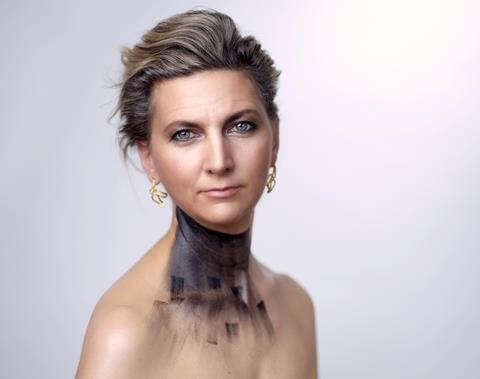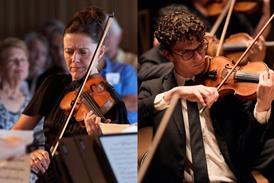Learning Bloch’s Schelomo was like a baptism of fire for the French cellist – but as well as the technical challenges, it gave an eye-opening perspective on how music can make you feel

Discover more Featured Stories like this in The Strad Playing Hub.
Read more premium content for subscribers here
I fell in love with the Swiss composer Ernest Bloch’s Schelomo the first time I heard it, but I really got to know it when I was eleven years old. I had to learn it for a competition and I found the piece fascinating. The cello is meant to take on the voice of King Solomon with the orchestra representing the world around him, and it was perhaps the first piece I’d played that was so intense it made me feel as if I was the music. I really identified with the character and it was almost overwhelming for me at that age – although I still get that intense feeling now, when I’m playing Bach.
Schelomo is an epic story beyond the scope of words. As well as being inspired by the Bible, it has a Homeric dimension in that the narrative is larger than can be embodied by a single human being. Bloch structured it in three sections but I think it’s more of a single journey, right from the cello’s first few long notes up to the very end which signifies the death of Solomon. The cellist takes the role of storyteller, and the part often feels more like a speech than a song. From the first note you have to embody Solomon’s destiny, and it requires a lot of inspiration to get into the heart of the piece, with Solomon’s hope, love and despair – especially in the second movement.
For the epigraph to Schelomo, Bloch chose the first verse of Ecclesiastes, said to be the words of Solomon himself: ‘Vanity of vanities, all is vanity.’ The line has had many interpretations, but Henri Meschonnic suggested it was a mistranslation of the Hebrew word hebel: it can mean ‘vanity’ but the original sense is ‘mist’. So, ‘everything is mist’. Perhaps the ultimate message of Schelomo is mysterious and he deliberately makes it opaque and difficult to understand.

When I was learning Schelomo, I remember my tutor said that one single passage could require up to ten different kinds of vibrato! I remember I had to learn how to increase my volume to be heard over the orchestra – with more playing at the bridge, for instance. Also, it isn’t an easy piece to memorise, and especially not for an eleven-year-old girl! Thirdly, this piece taught me a lot about the use of rubato: you have to be very aware of the different rhythms within the orchestra, and if you’re not careful the conductor can get lost between you and the orchestra. So it’s a very good piece to experiment with finding a nice level of rubato while staying right in the middle of the rhythm.
The competition at which I first performed Schelomo was very memorable for me. The violin pedagogue Philippe Muller was on the jury, and my tutor introduced me to him after the performance. He said he was really touched by the intensity with which I was playing, even though I was so tiny, and suggested I come to him for some lessons in Paris. That was my first meeting with him, and he later became my principal tutor at the Conservatoire de Paris.
Another memorable performance for me came in 2015, when I was recording Schelomo for Aparté with the Orchestra Philharmonique de Monte-Carlo. At the time I was six months pregnant with my twins, and it was July, so a desperately hot time to be in Monte Carlo! As I played, I could feel the twins reacting to the music inside me – I could even tell which was which, as each of them was feeling the music in a different way! They particularly reacted to the dramatic ending to the piece; and I’m pleased to say they’ve both turned out to be quite musical today.
INTERVIEW BY CHRISTIAN LLOYD
Read: Technique: Ophélie Gaillard on speaking with the bow
Read: Ophélie Gaillard reunited with stolen Goffriller cello
Discover more Featured Stories like this in The Strad Playing Hub.
Read more premium content for subscribers here
The number one source for playing and teaching books, guides, CDs, calendars and back issues of the magazine.
In The Best of Technique you’ll discover the top playing tips of the world’s leading string players and teachers. It’s packed full of exercises for students, plus examples from the standard repertoire to show you how to integrate the technique into your playing.
The Strad’s Masterclass series brings together the finest string players with some of the greatest string works ever written. Always one of our most popular sections, Masterclass has been an invaluable aid to aspiring soloists, chamber musicians and string teachers since the 1990s.
American collector David L. Fulton amassed one of the 20th century’s finest collections of stringed instruments. This year’s calendar pays tribute to some of these priceless treasures, including Yehudi Menuhin’s celebrated ‘Lord Wilton’ Guarneri, the Carlo Bergonzi once played by Fritz Kreisler, and four instruments by Antonio Stradivari.













































No comments yet